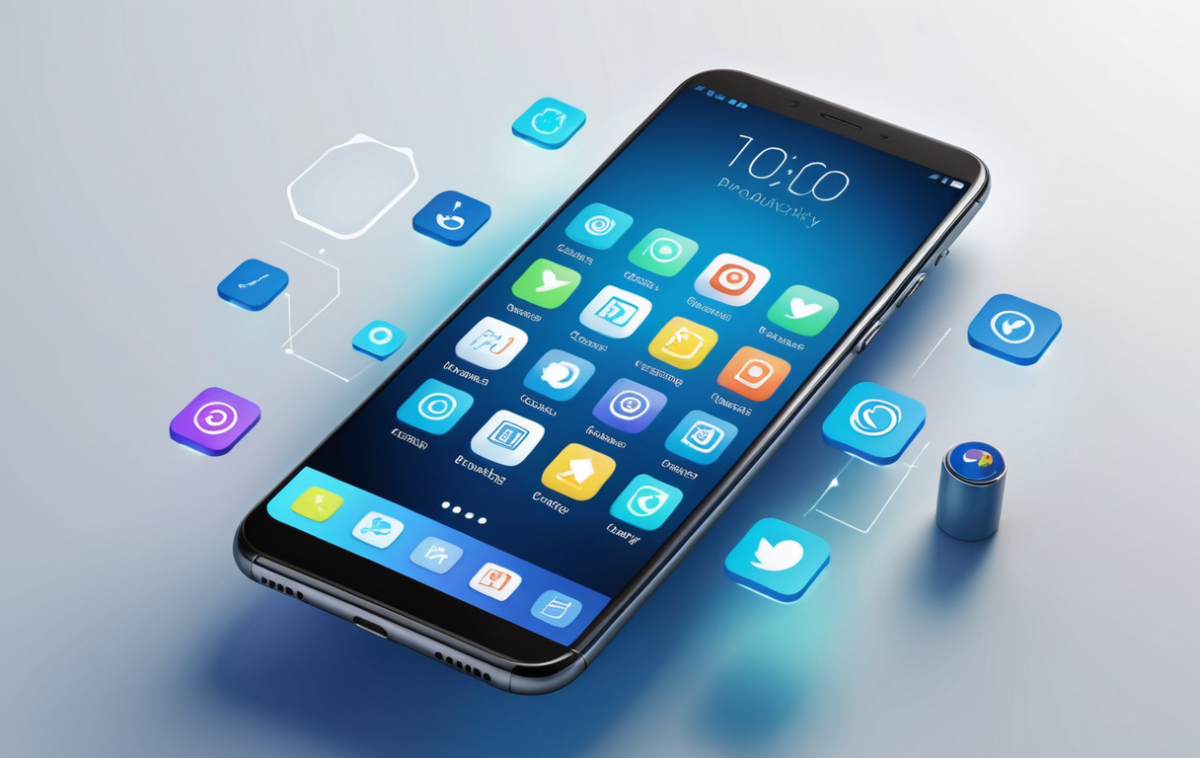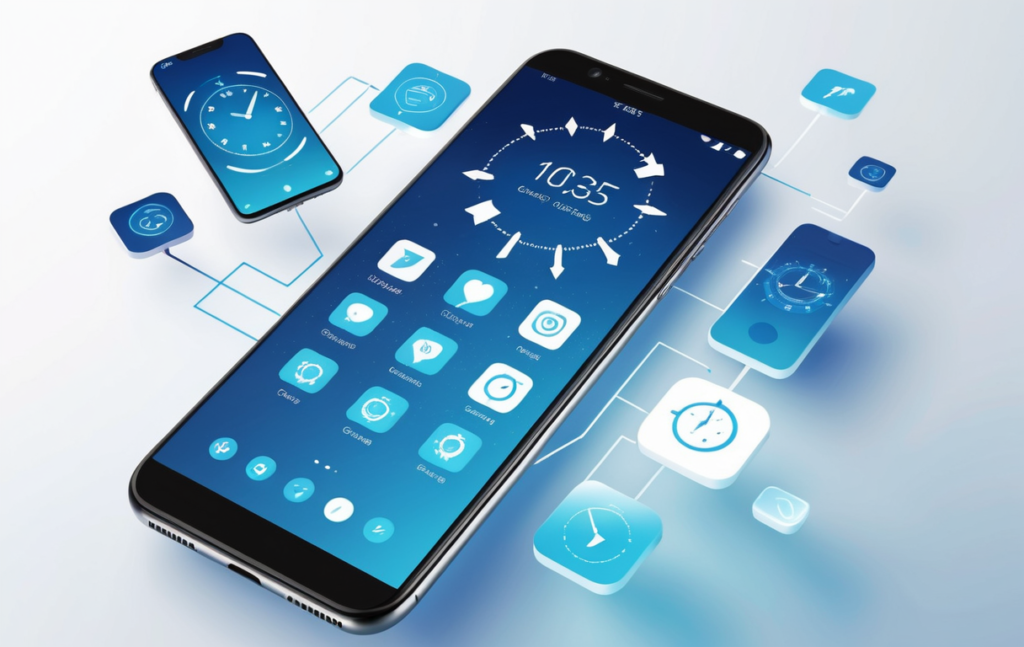Introduction
In today’s fast-paced world, businesses and individuals alike are turning to digital productivity apps. Whether you’re looking to manage projects, organize daily tasks, or minimize distractions, there’s a productivity app designed for your needs. With countless options available, it can be challenging to decide which one is right for you. To make your choice easier and improve your workflow, we’ve compiled a list of America’s best productivity apps. Let’s explore how these tools can help you stay focused, save time, and achieve your goals.
1. History of Productivity Applications
Before the digital age, productivity relied on tools like paper planners, agendas, and calendars. However, the advent of smartphones, tablets, and laptops revolutionized productivity tools. From the early days of Microsoft Office to today’s AI-powered apps, digital tools have transformed how we manage tasks, collaborate, and optimize workflows. Modern productivity apps, focused on specific tasks like project management or time tracking, leverage AI and automation to simplify and enhance productivity.
2. Key Trends and Predictions for Productivity Apps
The evolution of productivity apps is driven by several significant trends:
a. AI Integration
- Features like algorithm-assisted scheduling, inbox prioritization, and intelligent to-do lists are making manual tasks obsolete.
b. Enhanced Collaboration
- Apps like Asana and Trello support team collaboration, meeting the growing demand for remote and hybrid work setups.
c. Privacy and Security
- Advanced encryption and data protection are now standard features to safeguard user information.
d. Cross-Platform Integration
- Seamless syncing across devices ensures uninterrupted productivity, whether on a phone, tablet, or desktop.
These trends indicate a future where productivity apps become even more user-centric and customizable.
3. Top Productivity Apps for Managers

a. Trello
Overview: Trello uses boards, lists, and cards for task management. It’s ideal for visual planners and team projects.
Features:
- Drag-and-drop task organization.
- Team collaboration with deadlines and assignments.
- Integration with tools like Google Drive and Slack.
Pros: Visually intuitive and great for collaboration.
Cons: Limited features in the free version.
Best For: Teams managing collaborative projects.
b. Todoist
Overview: A simple yet powerful task management app for prioritizing and scheduling.
Features:
- Task prioritization and daily planning.
- Google Calendar integration.
Pros: User-friendly and highly customizable.
Cons: Lacks advanced features found in some competitors.
Best For: Personal task management and scheduling.
c. Notion
Overview: An all-in-one workspace for notes, tasks, and project management.
Features:
- Supports personal and team environments.
- Integrates with external tools.
Pros: Highly versatile and customizable.
Cons: The extensive feature set can be overwhelming for beginners.
Best For: Users looking for a single app to manage multiple productivity needs.
d. Slack
Overview: Initially a chat app, Slack now offers comprehensive productivity features.
Features:
- Channels for team interaction.
- File sharing, video calls, and reminders.
Pros: Encourages collaboration with app integrations.
Cons: Excessive notifications can be distracting.
Best For: Remote and hybrid teams requiring seamless communication.
e. Evernote
Overview: A note-taking app paired with task management.
Features:
- Web clipper for saving content.
- Cloud backup for easy access.
Pros: Excellent for organizing ideas and content.
Cons: Most advanced features require a premium subscription.
Best For: Users needing to organize notes and research efficiently.
4. Practical Tips to Maximize Productivity App Benefits
- Stay Organized: Mark tasks as completed in your app to track progress.
- Set Alerts: Use reminder notifications to stay on schedule.
- Leverage Integrations: Combine apps like Slack and Trello for seamless workflows.
- Review Weekly: Use built-in tracking features to measure productivity and make improvements.
5. Case Studies: Productivity Apps in Action
a. Trello for Team Projects
Jane, a project manager, used Trello’s visual boards to organize her team’s tasks. The result? A 20% faster project completion rate.
b. Todoist for Personal Task Management
Mark, a busy entrepreneur, relied on Todoist to prioritize his daily tasks. Weekly tracking helped him exceed his goals over time.
6. Pros and Cons of Productivity Apps
| Pros | Cons |
|---|---|
| Organize tasks and streamline workflows | Advanced features often require payment |
| Enhance team communication and collaboration | Excessive notifications can be distracting |
| Track productivity over time | Learning curves for some apps |
| Cross-platform syncing | Cloud storage limitations |
7. FAQs
Q1: Are productivity apps free?
A: Many offer free versions with limited functionality, but premium features typically require payment.
Q2: Which apps are best for team projects?
A: Apps like Trello, Asana, and Notion excel at team collaboration and project tracking.
Q3: Do productivity apps improve focus and organization?
A: Yes, with prioritization tools, reminders, and tracking options, they help users tackle tasks efficiently.
Q4: Can I integrate multiple productivity apps?
A: Absolutely! For example, combine Slack with Trello or Todoist with Google Calendar for enhanced workflows.
Conclusion
The right productivity app can transform how you work, whether managing daily tasks or complex projects. Each app mentioned here is among the most popular in the U.S., designed to keep users organized, focused, and efficient.
Call to Action:
Why wait? Try one of these apps today and take your productivity to the next level. Share your experiences in the comments—your insights might inspire others to find their perfect productivity tool!
